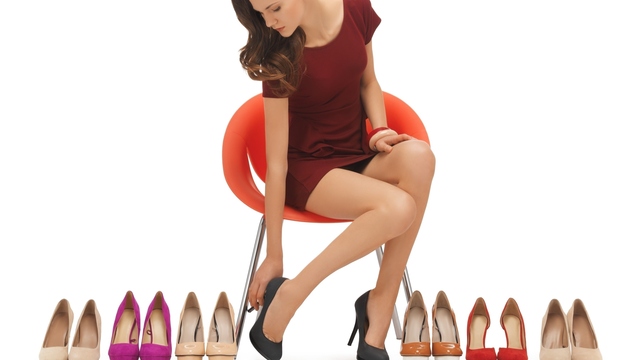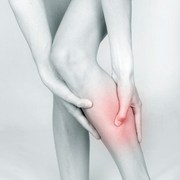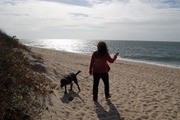The calf muscles consist of the Gastrocnemius which is the big muscle at the back of the lower leg and the Soleus muscle which is a smaller muscle lower down in the leg and under the Gastrocnemius. (Sports Injury Clinic.net http://www.sportsinjuryclinic.net/cybertherapist/back/backlowerleg/calfstrain.htm)
The calf muscles consist of the Gastrocnemius which is the big muscle at the back of the lower leg and the Soleus muscle which is a smaller muscle lower down in the leg, under the Gastrocnemius.
Gastrocnemius is the larger of the two muscles which attaches above the knee joint and inserts into the heel bone via the achilles tendon. The Soleus attaches below the knee joint and then also to the heel via the achilles. Either of these two muscles can be strained.
Both muscles act to plantarflex the ankle (point the foot away from the body). As gastrocnemius attaches above the knee it also helps with bending the knee. In this position, with the knee bent, soleus becomes the main plantarflexor. If the Soleus muscle is damaged you might get pain lower in the leg and also pain when you contract the muscle against resistance with the knee bent.
All muscle strains are graded from 1-3, with grade 1 being a minor tear, with up to 10% of fibrers involved. A grade 2 tear involves up to 90% of the muscle fibres and a grade 3 is over 90% of fibers torn, or a full rupture. This usually occurs at the muscular tendinous junction or the achilles tendon itself.
Both muscles act to plantarflex the ankle (point the foot away from the body). As gastrocnemius attaches above the knee it also helps with bending the knee. In this position, with the knee bent, soleus becomes the main plantarflexor. If the Soleus muscle is damaged you might get pain lower in the leg and also pain when you contract the muscle against resistance with the knee bent.
Symptoms of calf strain include:
Grade 1:
A twinge of pain in the back of the lower leg.
May be able to play on.
Tightness and aching in the 2-5 days after.
Grade 2
Sharp pain in the back of the lower leg.
Pain when walking.
There may be swelling in the calf.
Mild to moderate bruising.
Pain on resisted plantarflexion
Tightness and aching for a week or more.
Grade 3
Severe immediate pain.
A sudden pain at the back of the leg, often at the muscular tendinous junction (see image below).
Inability to contract the muscle.
Considerable bruising and swelling.
In the case of a full rupture, often the muscle can be seen to be bunched up towards the top of the calf.
A calf strain may be more likely in athletes who have tight calf muscles.
Treatment of calf strain
What can the person do immediately?
As in the case of almost every type of muscular strain, applying R.I.C.E. (Rest, Ice, Compression, Elevation) is a crucial first step toward healing and pain relief.
Cold therapy should be applied as soon as possible, in case of internal bleeding.
Use a compression bandage or sleeve.
See a sports injury professional who can advise on treatment and rehabilitation.
Wear a heel pad to raise the heel and shorten the calf muscle in order to take some of the strain off it. It is a good idea to put heel pads in both shoes in order to maintain proper balance and avoid further injuring yourself.
Anti-inflammatory medication to reduce swelling and pain as well as sports massage and strengthening exercises once the acute phase has passed are all recommended in the treatment of calf strain.





Add a CommentComments
There are no comments yet. Be the first one and get the conversation started!